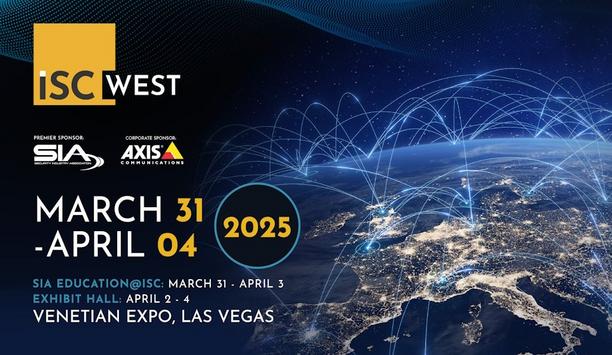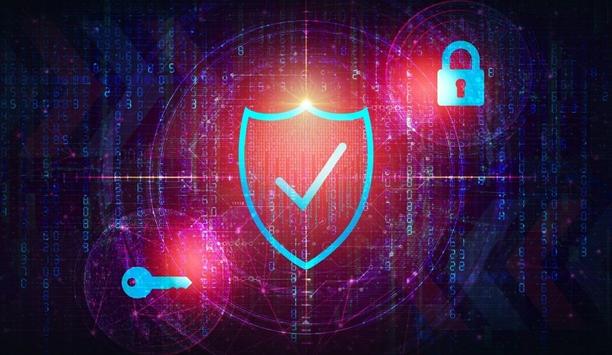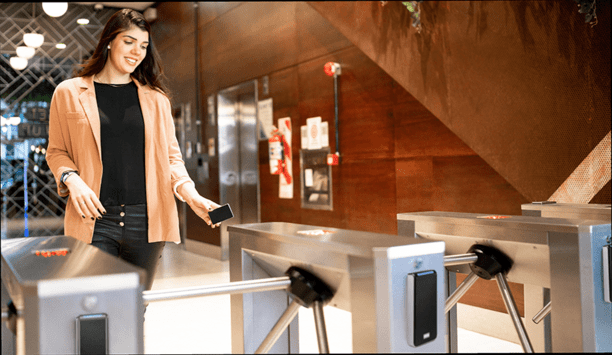Microsoft Corporation - Experts & Thought Leaders
Latest Microsoft Corporation news & announcements
Anywhere365, a global provider of cloud-based contact centre and dialogue management solutions, has announced that through its long-term relationship with Microsoft, it will be introducing Microsoft’s latest offering, Teams Phone Extensibility for Dialogue Cloud. Microsoft Teams Phone Extensibility New integration between the two solutions will empower customers with advanced call automation Microsoft Teams Phone Extensibility for Dialogue Cloud enables the Anywhere365 Contact Centre platform to use Azure Communications Services with Teams telephony. This new integration between the two solutions will empower customers with advanced call automation, cognitive services and AI-driven insights. This week, Ilya Burshteyn, Vice President for Microsoft Teams Calling, Devices and Premium Experiences, announced the new Team Phone Extensibility at Enterprise Connect 2025 in Orlando, US. Anywhere365 is an ISV partner of Microsoft Will Blench, the Chief Executive Officer (CEO) at Anywwhere356 says, “We are delighted to be a Microsoft partner for the launch of Microsoft Teams Phone Extensibility. Our collaboration with Microsoft spans several years and has been the cornerstone of many innovative communications solutions and we are committed to working together to continue to set new standards in the industry.” Anywhere365 is an ISV partner of Microsoft and as part of the Microsoft Technology Adoption Program (TAP), Anywhere365 was selected to be a key release partner within the Teams Phone Extensibility programme, enabling its developers to work collaboratively with Microsoft to build, test and prove the integrations with the Anywhere365 Dialogue Cloud contact center. Anywhere365 Dialogue Cloud Infinity Anywhere365 Dialogue Cloud Infinity will now use Azure Communication Services (ACS) to empower customers with advanced call automation, cognitive services, and AI-driven insights. Key features of this solution include: Seamless Integration: With a unified telephony solution that integrates smoothly into the existing Microsoft environment, reducing complexity and enhancing efficiency. Powerful Connectivity: Use Teams for everyday communication, while tapping into ACS for advanced call automation and AI-driven capabilities. Simplified Management: Easy to onboard and deploy using your Teams phone numbers within the Dialogue Cloud administration settings. Flexible Deployment: Available for pilot and PoC customers, with general availability targeted for the end of Q2. Microsoft Teams Phone Extensibility “Off the back of this launch, which will see Microsoft Teams Phone Extensibility be made available later this year, Anywhere365 customers will be able to use Teams Phone for a single, integrated solution with the Anywhere365 Dialogue Cloud that spans all their calling needs and enables advanced AI functionality through Azure Communication Services,” said Will Blench. He adds, “This unified approach will simplify the deployment, management, and billing to allow our customers to focus on what matters most: exceptional customer engagement.” Availability will follow the Microsoft release schedule.
SUSE®, a pioneer in innovative, open and secure enterprise-grade solutions, announced an integration between SUSE Security and Microsoft Sentinel, a cloud-native security information and event management (SIEM) solution. The integration, enhanced by the generative AI capabilities of Microsoft Security Copilot, empowers joint customers with a unified security approach across hybrid IT environments. Robust security solution “This new integration is a robust security solution for any organisation running cloud native workloads on Microsoft Azure and is a great example of how AI is being used to advance enterprise cybersecurity strategies,” said Laurent Mechain, Global Head of Cloud at SUSE. “We’re excited to deepen our existing work with Microsoft and reinforce our commitment to powering open, secure innovation.” Cybersecurity landscape “In a cybersecurity landscape that is growing increasingly complex, it's crucial that organisations have the right tools to quickly identify and mitigate security threats,” said David Houlding, Director, Global Healthcare Security & Compliance Strategy at Microsoft. “Collaborating with SUSE will help our mutual customers streamline their security operations and, ultimately, better protect against threats.” Centralised security dashboard New integration helps address that challenge with a centralised security dashboard Managing security posture across different platforms and environments, especially amid an increasing volume and sophistication of security threats, is a challenge for many enterprises now. This new integration helps address that challenge with a centralised security dashboard, offering customers broader visibility of security threats across environments and the ability to respond to them with automated actions. Data from SUSE Security Microsoft Sentinel raises an alert based on the data and autonomously quarantines the node to prevent any spread while waiting for a human review, significantly accelerating the response time. With this new integration, data from SUSE Security events is funnelled directly into Microsoft Sentinel. SUSE Security data with other data sources Microsoft Security Copilot can also correlate SUSE Security data with other data sources Microsoft Security Copilot then analyses the data and shares AI-driven recommendations for threat mitigation, giving customers the ability to proactively address potential threats. Microsoft Security Copilot can also correlate SUSE Security data with other data sources within Sentinel to identify patterns and anomalies that could indicate a sophisticated attack. Benefits of integration This integration provides the following benefits: Improved Visibility: bringing all signals from SUSE Security together in Sentinel provides a comprehensive view of security threats across hybrid IT environments, eliminating blind spots. Faster Threat Response: AI-driven recommendations from Security Copilot enable proactive threat mitigation and faster incident response. Enhanced Threat Detection: Security Copilot correlates SUSE Security data with other data sources within Sentinel to identify complex and sophisticated attacks that might otherwise go unnoticed. Streamlined Security Operations: The integration simplifies security management by centralising data and providing AI-powered insights. Stronger Security Posture: Combining SUSE's Kubernetes security with Microsoft's security tools creates a robust security solution. AI-driven insights and protection SUSE Security offers SUSE Rancher Prime, a best-in-class enterprise container management platform, that will manage the Kubernetes clusters across heterogeneous environments, taking security and compliance into account. When combined with Microsoft Sentinel and Microsoft Security Copilot, provides comprehensive threat intelligence, AI-driven insights and automated protection.
Coalition, the world's first Active Insurance provider designed to prevent digital risk before it strikes, published its Cyber Threat Index 2025, detailing insights on cybersecurity trends from 2024 and emerging threats businesses should be aware of in 2025. According to the report, most ransomware claims in 2024 started with threat actors compromising perimeter security appliances (58%), like virtual private networks (VPNs) or firewalls. Remote desktop products were second-most (18%) exploited for ransomware attacks. Ransomware cyber attack “While ransomware is a serious concern for all businesses, these insights demonstrate that threat actors’ ransomware playbook hasn’t evolved all that much—they’re still going after the same tried and true technologies with many of the same methods,” commented Alok Ojha, Coalition’s Head of Products, Security. “This means that businesses can have a reliable playbook, too, and should focus on mitigating the riskiest security issues first to reduce the likelihood of ransomware or another cyber attack. Continuous attack surface monitoring to detect these technologies and mitigate possible vulnerabilities could mean the difference between a threat and an incident.” Other key findings from the report The total number of published software vulnerabilities will increase to over 45,000 in 2025, a rate of nearly 4,000 per month and a 15% jump over the first 10 months of 2024. Across all ransomware claims, the most common initial access vectors (IAVs) were stolen credentials (47%) and software exploits (29%). Vendors such as Fortinet®, Cisco®, SonicWall®, Palo Alto Networks®, and Microsoft® build the most commonly compromised products. Exposed logins are an underappreciated driver of ransomware risk. Coalition detected over 5 million internet-exposed remote management solutions and tens of thousands of exposed login panels across the internet. When applying for cyber insurance, most businesses (65%+) had at least one internet-exposed web login panel. Crucial security risks Policyholders received critical alerts for just 0.15% of vulnerabilities published in the first ten months “This year’s report focuses on the most crucial security risks that under-resourced organisations should understand to better calibrate their defensive investments to bolster resilience,” said Daniel Woods, Senior Security Researcher at Coalition. “Calibration involves balancing security investment across vulnerabilities, misconfigurations, and threat intelligence while also responding to emerging threats, such as zero-day vulnerabilities exploited in the wild. That’s why Coalition issues Zero-Day Alerts to help businesses, especially SMBs with limited security resources, stay ahead of these vulnerabilities and reduce alert fatigue by prioritising those posing the greatest risk.” Risk prioritisation for policyholders Coalition employs artificial intelligence, honeypots, and human judgement to prioritise high-risk vulnerabilities based on their likelihood of exploitation. This risk prioritisation reduces alert fatigue for policyholders and helps them focus on the most critical risks. Policyholders received critical alerts for just 0.15% of vulnerabilities published in the first ten months of 2024, and 90% never received an alert at all. These timely notifications enabled Coalition customers to remediate over 32,000 vulnerabilities last year.
Insights & Opinions from thought leaders at Microsoft Corporation
As the pioneering security event in the United States, ISC West is truly the global focal point for bringing together professionals across the physical and cybersecurity landscape. The event seeks to showcase innovation in security technology, nurture professional development, and explore the security implications of today’s connected world. Future of security With the growth of cybersecurity programming and the established Cybersecurity & Connected Internet of Things (IoT) pavilion, ISC West is addressing the future of security head-on. “As the lines between the digital and physical worlds blur, collaboration and shared learning among defenders have never been more critical,” says Mary Beth Shaughnessy, Event Vice President at RX USA, who oversees all aspects of the ISC brand. Shaughnessy previews what’s new at ISC West 2025 and shares other insights in our interview. Q: For long-time attendees at ISC West, what will be the biggest surprise at the 2025 show? Shaughnessy: Long-time attendees know to expect top-tier educational content through the SIA Education@ISC West program (produced by the Security Industry Association (SIA)) in addition to cutting-edge security innovations showcased by 700+ exhibitors. New this year is our focus on technology, training, and education around cyber-physical threats. In today’s connected world, physical and cybersecurity defenders must take a unified, holistic approach to protecting their people, assets, and data. ISC West serves as a bridge between those two worlds, helping organisations tackle the complex security landscape. Q: Presenting a high-profile music concert as part of ISC West is a fun value-add for attendees. Describe how this feature has been embraced by longtime attendees, and the plans for 2025. Shaughnessy: We’re thrilled to announce that the legendary Gin Blossoms will headline the ISC West Concert, sponsored by Wavelynx. This tradition began last year and became a celebrated highlight, offering professionals a chance to unwind and connect with colleagues and peers after a productive day on the show floor. When choosing a performer, we focus on acts that resonate across generations, making the experience both entertaining and memorable for our diverse audience. We are excited to continue this fun and exciting event and networking opportunity. Q: In the past, the education program at ISC West has been seen as secondary to the Expo event. How have you sought to increase the profile of the education program, and what new features will attract more attendees in 2025? Shaughnessy: We’ve expanded the SIA Education@ISC programming from three to four days, now beginning two days before the expo hall opens. These dedicated education days ensure professionals can engage in thoughtful discussions and gain actionable insights without overlapping with the Expo. This year, we’re proud to partner with RSA to introduce a new “IT for Security Professionals” track while also offering our core tracks, including AI & Digital Transformation, Critical Infrastructure & Data Protection, Cybersecurity & IT, InfraGard National Members Alliance @ ISC, and Video Surveillance. We will also be welcoming powerful keynote speakers — Rachel Wilson, Director of Cybersecurity, Morgan Stanley Wealth Management; Will Bernhjelm, Vice President of Security, Mall of America; and Kate Maxwell, Chief Technology Officer, Worldwide Defense & Intelligence, Microsoft. Q: What else is “new” at ISC West in 2025? Shaughnessy: Our educational programming has grown significantly — this year’s SIA Education@ISC program is our most extensive yet, offering more than 115 sessions led by over 200 distinguished experts. With broader and deeper topics, the program emphasises the critical convergence of cyber and physical security, providing unparalleled insights for today’s security professionals. We are also significantly ramping up our cybersecurity offerings and expect to have more than 50 exhibitors in our Cybersecurity & Connected IoT pavilion with names such as Entrust and Ontic. Q: Networking is a critical aspect of ISC West. How are show organisers working to increase networking opportunities? Shaughnessy: Networking remains a top priority at ISC West, with countless opportunities to build valuable connections. Professionals can join peers at popular spots like The Bridge, The Cyber Hub, and the Career Zone (sponsored by: TEECOM). These spaces offer the chance to learn from industry experts, explore the challenges and innovations shaping the security workforce, and engage in dynamic discussions with peers. Also, returning by popular demand, the ISC West Concert, proudly sponsored by Wavelynx, delivers a vibrant evening of music and networking in a relaxed atmosphere. Together, these experiences ensure networking at ISC West is both impactful and memorable. Q: What is the biggest challenge for organisers of ISC West (and related events), and how are the organisers seeking to address the challenges? Shaughnessy: As with most events, there is a lot of pressure on organisers to ensure there’s “something for everyone,” add meaningful value, and introduce fresh, exciting features. At ISC West, we work to raise the bar each year by expanding our content with more thought pioneers, showcasing a broader range of innovative technologies, and fostering additional networking opportunities. Achieving top-quality results is no small task — it demands careful planning, collaboration, and a dedication to continuous improvement. This means actively listening to the needs of our attendees and exhibitors, staying ahead of industry trends, and ensuring we provide an experience that informs, inspires, and connects the security community.
In the competitive world of physical access control, Big Tech companies are seeking to play a larger role. Physical access competition Apple Wallet continues to stake its claim on mobile credentialing. Amazon One Enterprise is pushing a palm-based identity service. Google/Nest offers smart locks for home access control, with identity and access management provided in the Google Cloud. The entry of these big companies in the historically fragmented physical access control market is causing disruption and foreboding new levels of competition. Apple Wallet impacting credentialing trends The popularity of mobile wallets and contactless technologies in general has grown, creating more demand At Apple’s Worldwide Developer Conference in June 2021, the company announced support for home, office and hotel keys, including corporate badges and student ID cards, in Apple Wallet. Later, the company announced Hyatt as the first hotel partner to support the technology. Since then, the popularity of mobile wallets and contactless technologies in general has grown, creating more demand for a seamless solution such as Apple Wallet. Easy access In 2023, HID Global announced the availability of their employee badge in Apple Wallet, allowing staff and guests to easily access corporate spaces with their iPhone or Apple Watch, including doors, elevators, turnstiles, etc. Employees just need to hold their iPhone or Apple Watch near the reader to unlock. Factors affecting the rate of adoption However, implementing and maintaining an Apple Wallet-based access control system can incur costs for hardware updates, software licencing, and ongoing maintenance. Factors affecting the rate of adoption include the need to upgrade existing infrastructures to accommodate the technology, and the necessity for access control manufacturers to develop and implement integrations with Apple Wallet. Benefits of adoption Keys in Apple Wallet take full advantage of the privacy and security built into the iPhone and Apple Watch With larger companies leading the way, some smaller ones might take longer to catch up. There is also a need to educate building owners and administrators to see the value and benefits of switching to Apple Wallet-based access control. Convenience and greater security can accelerate adoption. Keys in Apple Wallet take full advantage of the privacy and security built into iPhone and Apple Watch. Sensitive data protection A compatible app, specific to the building’s access control system, is needed. Once added, credentials are securely stored in the iPhone's Secure Enclave, a dedicated hardware chip designed for sensitive data protection. Holding an iPhone near an NFC-enabled reader enables transmission of encrypted credentials. In addition to Near Field Communication (NFC), some systems also utilise Bluetooth Low Energy (BLE) for added security, longer read range, and hands-free unlocking. Phones need sufficient battery charge to function. Amazon One Enterprise Enables Palm-Based Biometrics In November 2023, Amazon Web Services Inc. (AWS) announced an identity service providing comprehensive and easy-to-use authentication for physical and digital access control. The system enables users to employ their palm as an access control credential, allowing organisations to provide a fast and contactless experience for employees and others to gain access to physical locations as well as digital assets. Physical and digital locations Physical locations include data centres, office and residential buildings, airports, hotels, resorts Physical locations include data centres, office and residential buildings, airports, hotels, resorts, and educational institutions. IT and security administrators can easily install Amazon One devices and manage users, devices, and software updates using AWS’s Management Console. Elimination of physical credentials An advantage of the Amazon approach is the elimination of physical credentials such as fobs and badges, and digital elements such as personal identification numbers (PINs) and passwords. AWS says security is built into every stage of the service, from multi-layered security controls in the Amazon One device, which is the same technology used in the Amazon Go retail stores, where shoppers can pay for purchases by scanning the palm of their hands. The devices combine palm and vein imagery for biometric matching and deliver an accuracy rate of 99.9999%, which exceeds the accuracy of other biometric alternatives, says the company. AI and ML The palm-recognition technology uses artificial intelligence and machine learning to create a “palm signature” that is associated with identification credentials such as a badge, employee ID or PIN. Boon Edam, a revolving door and turnstile manufacturer, offers Amazon’s palm biometric technology on its equipment, and IHG Hotels & Resorts uses the technology to provide employees a convenient way to identify themselves and gain access to software systems. Google and Nest Devices in Access Control When the Nest × Yale Lock is connected to the Nest app, a resident can unlock a door from their phone Google’s Nest devices include smart locks for home access control. The Google Nest × Yale Lock allows access control via both physical keys and passcodes accessible through the Google Home app. When the Nest × Yale Lock is connected to the Nest app, a resident can unlock a door from their phone. Passcodes can be created for family, guests, and other trusted persons. Alerts can be provided whenever someone unlocks and locks the door. When Nest “knows” a resident is away, the door can lock automatically. Voice control, Google Home app Voice control, using Google Assistant integrated with various Nest devices, enables use of voice commands to lock and unlock doors, thus adding another level of convenience. Smart home devices from various manufacturers can be controlled through the Google Home app. SMART Monitoring ADT’s Self Setup smart home security systems integrate Google Nest smart home products with ADT security and life safety technology, including SMART Monitoring technology. Microsoft Azure is another company that could impact access control. The Microsoft Azure Active Directory is an identity and access management platform that could be extended to physical access control, leveraging existing user credentials. Long-Range Impact on the Security Marketplace Big Tech companies are creating platforms for managing access control data, integrating with other security systems Increasingly, Big Tech companies are creating platforms for managing access control data, integrating with other security systems, and offering analytics for optimising security and building operations. Big Tech is also actively researching and developing new technologies for access control, such as facial recognition, voice authentication, and AI-powered anomaly detection. Access control communication and integration As their involvement in physical access control grows, Big Tech companies could potentially gain more influence in setting industry standards for access control communication and integration, similar to how they have become dominant in other areas such as mobile platforms. Given their expertise in user interface design and data analysis, Big Tech companies could help to direct how future access control systems are managed and how users interact with them, including more intuitive and user-friendly operations. Future of physical access control Existing concerns about privacy, security, and potential dominance by a few Big Tech companies could spill over into physical access control. However, traditional security companies, startups, and industry consortiums are also actively developing innovative solutions. Ultimately, the future of physical access control will likely be shaped by a combination of many different players and technologies – large and small.
Enterprise security directors often count on an integration firm to handle jobs ranging from day-to-day activities to long-term, technology-laden projects. However, before entering a relationship, you must know what's reasonable to expect from an integrator – as not all are created equal. Here are some tips that might make the selection process easier. Completing comprehensive classwork An integrator's experience working in an enterprise environment is an obvious consideration. Ideally, that experience fits well with your business. Any enterprise experience is a plus, but local, state, and federal regulations create precise yet very different rules for securing a utility instead of a hospital. That's also true for university campuses, manufacturing facilities, and many other operations. Many manufacturers offer certifications awarded after completing comprehensive classwork and testing Look for certifications indicative of an integrator's commitment to staying on top of industry changes. Organisations such as ASIS International and the Security Industry Association offer certifications showing an integrator's team members have mastered security principles and skills. Many manufacturers offer certifications awarded after completing comprehensive classwork and testing. Also, ensure an integrator sells and services equipment that integrates with your current security systems. Using multiple systems for the same function is less efficient. Project update meetings Go beyond an integrator's slick brochures and websites to ask tough questions about previous experience. How would the integrator handle a hypothetical situation in one of your facilities? Ask the integrator if there will be one project manager for all jobs. And ensure that person handles all interactions with security subcontractors. Ask if the integrator provides regularly scheduled project update meetings. It's frustrating to wonder how your project is progressing. Ask if the integrator's team can work during the hours and days that result in the least interference to your daily operations. Ask for onsite system training to save time and eliminate travel costs. Gathering sensitive data Look for an integrator with proven experience working with an enterprise IT department A malfunctioning component may be more than an inconvenience – it may be a severe security threat. You need to know how quickly your integrator can respond when things go wrong. Ask about available service plans. And consider the embedded staff approach in which the integrator places employees on your site full time to handle day-to-day and emergency activities. Much of the security equipment – video, access control, intercoms, visitor management, and more – is wireless and dependent upon networks operated by your IT department. Network-based devices provide more opportunities for hackers to gather sensitive data or cause critical equipment to malfunction. Don't trust your security operations with an Integrator unfamiliar with at least basic cybersecurity principles. Look for an integrator with proven experience working with an enterprise IT department. At a minimum, ensure the integrator can set and change security device IP addresses and port locations. Certifications from providers such as Cisco, Microsoft, and IBM indicate an understanding of various IT technologies. Potential security partners Knowledgeable integrators work with the well-encrypted Open Supervised Data Protocol (OSDP), now an internationally recognised standard. Run from any integrator who suggests operating an access control system with used Wiegand technology offering no encryption between cards and readers. It's easy for hackers to capture data and clone a working credential. Technology moves at a rapid pace. Your modern system of a few years ago may be long-of-tooth. You need an integrator capable of bringing new and innovative ideas to the table. You want an integrator who conducts in-house testing of new products, not relying solely on a manufacturer's claims. You want an integrator capable of thinking outside the box to solve a complex security problem. These ideas are just a start in assessing an integrator's value to your enterprise operation. However, they will help you sort through potential security partners to find one that best meets your needs.
Using artificial intelligence (AI) to automate physical security systems
DownloadA modern guide to data loss prevention
Download7 proven solutions for law enforcement key control and asset management
DownloadThe truth behind 9 mobile access myths
DownloadAccess control system planning phase 2
Download






















































